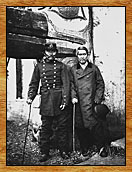 
(Page 2 of 3) |
Skidegate
By the 1820s the supply of sea otter furs was beginning to dwindle over much of the north coast, except for Skidegate. In the meantime, the written accounts of maritime traders had begun to interest the mission churches of New England, which had achieved rapid success in Hawaii and were aware of the expanding Russian missions in Alaska. In 1829, Reverend Jonathan Green, who had served the Hawaiian missions, was sent to the Northwest Coast, and provides this description in his journal:
Just before we cast anchor, we passed the village of Skidegas. To me the prospect was almost enchanting, and, more than any thing I had seen, reminded me of a civilized country. The houses, of which there are thirty or forty, appeared tolerably good, and before the door of many of them stood a large mast carved in the form of the human countenance, of the dog, wolf, etc., neatly painted. The land about the village appeared to be in a good state of cultivation. The Indians do not raise much, excepting potatoes, as they have not a variety of seeds; yet, from the appearance of the land, I presume they may greatly vary their vegetable productions.
Reverend Green attempted to preach to the chiefs of Skidegate on board the ship but observed: "When I had finished, they insisted upon my giving them a small drink of rum! . . . On board the ship of a north-west trader is a place very unsuitable to preach temperance to an Indian, and indeed to attempt anything in the form of Christian instructions." He abandoned all plans for a mission at Skidegate.

 |
Chief Nanjingwas wearing a naval uniform (left) and another man, probably Chief Skidegate VII, stand before the former's Raven crest at Chief's House in Skidegate.
Photograph by Edward Dossetter, 1881. |

During the 1830s, whalers began to arrive. In 1832, one whaling captain, a Mr. C. Jefferson, married a daughter of Chief Skidegate the Great and built a residence called Mosquito Hawk House. As he did not own any crests, Jefferson was permitted to use one of his wife's crests, the Raven with a broken beak (a reference to the Raven and the halibut fisherman myth), at the base of his house frontal pole. He filled in the space above the Raven with seven coppers stacked three across as a sign of his wealth.
The fur trade after 1834 swung heavily to the Hudson's Bay Company's new Fort Simpson on the mainland in Tsimshian territory. The Haida from Skidegate visited the fort regularly to trade their potatoes and tobacco to the Tsimshian, who acted as intermediaries.
The discovery of gold in the Queen Charlotte Islands in 1849 brought the first mass influx of whites to the area, but by 1854 the gold rush had subsided. A couple of ships that visited the area in search of gold were wrecked, and James Deans reports that the Skidegate chiefs profited considerably both from the brief gold rush and the ransom of shipwrecked sailors. This windfall led to a flurry of raising new poles and building new houses, but it also gave such a bad reputation to Skidegate that ships stopped calling for a while.
The Haida were bothered by the lack of trading contacts, and in 1853 five hundred of them canoed south to the colonial outposts of Victoria and Nanaimo. Their arrival in Victoria frightened the small settlement, and Governor James Douglas sent them home. However, a few weeks later, a smaller flotilla of five canoes quietly returned to Victoria. This was the beginning of an annual migration that lasted for two decades, leaving Skidegate almost empty for much of each year. Two things came back to the village with the returning families: wealth, which allowed them to build larger houses and raise more poles, and a variety of diseases that ravaged the populace. Only the influx of survivors from the southern Haida villages that had been hit even harder by disease kept Skidegate alive. The new villagers brought with them many family treasures, which they mostly sold to travellers and collectors.
The worst epidemics hit Skidegate in the late 1860s, and many of the houses abandoned in the back row were never rebuilt, though the frontal poles of these dwellings and their massive frames can be seen in photographs taken by George M. Dawson in 1878.
|